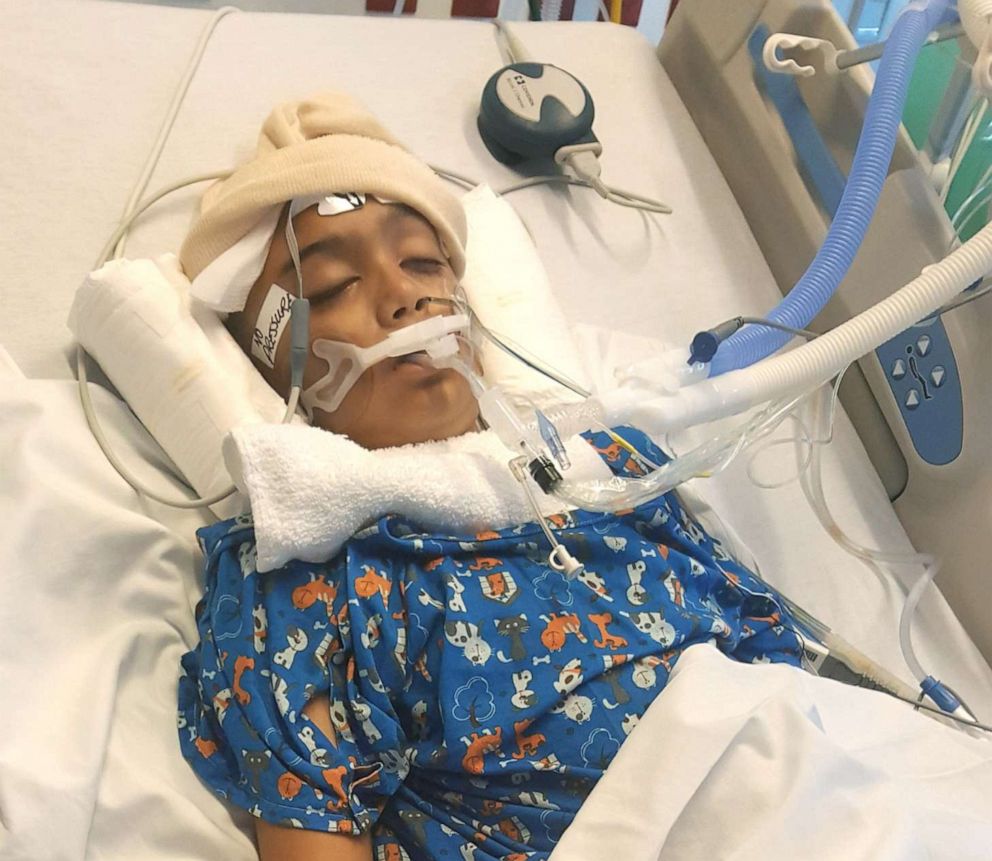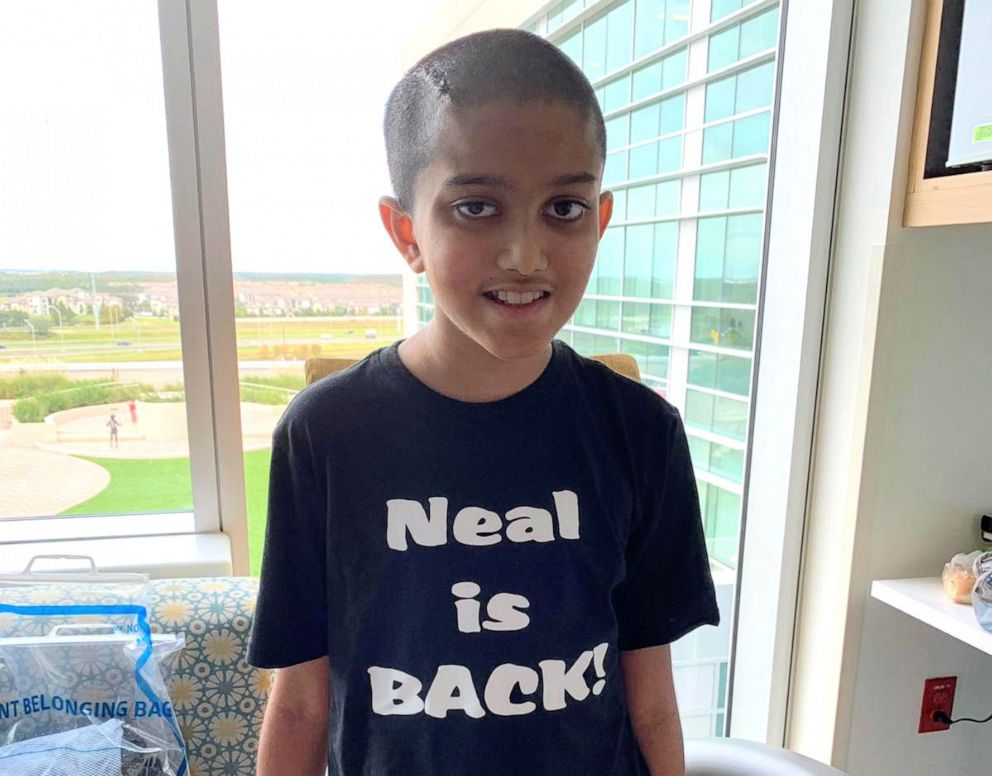Mom-Of-2, Christie Wants Parents To Know These After Her 10-Year-Old Son Suffered A Life-threatening Stroke

A Florida mom, Twinkal Christie is sharing her story to let other parents know that strokes can happen to kids, using the case of her now 11-year-old son as an example who was in a life threatening situation caused by stroke.
Stroke is one of the top 10 causes of death in children, according to the International Alliance for Pediatric Stroke (IAPS), part of the American Stroke Association.
The same stroke symptoms in adults also apply to kids. These symptoms include slurred speech, headaches, confusion, vision loss, numbness and loss of strength. The earlier the stroke is treated, the better the chances are for survival, according to the IAPS.
The high school teacher and mom of two in Orlando, sat down for a regular Sunday night dinner with her family in October of last year when her son, Neal, suddenly started complaining first of a headache and then of numbness in his leg.
When Neal’s speech began to slur and his eyes began to roll back into his head, Christie thought her son was having a seizure but then realized it was something she never expected her child to have, a stroke. Christie in a chat with Good Morning America said:
“When I asked him to raise his hands, only his right hand went up and his left hand stayed back. When I asked him to smile and saw his smile, I knew that this was definitely a stroke but I didn’t accept that because he’s 10. He can’t be having a stroke.”
“Then the 911 operator is telling me, ‘Ma’am your son is having a stroke.’ And I’m kind of getting angry at her, saying, ‘He’s 10. He can’t be having a stroke. Are you crazy?,'” Christie recalled.
Neal was rushed by ambulance to a nearby emergency room and received a CAT scan. The doctor told Christie and her husband, Amish that their son had bleeding in his brain and needed to undergo emergency surgery. Neal was quickly airlifted to Nemours Children’s Hospital in Orlando, where he underwent hours-long surgery.
Doctors determined he had suffered a hemorrhagic stroke which occurs when a weakened vessel ruptures and bleeds into the surrounding brain, according to the American Stroke Association.
In Neal’s case, the stroke was caused by an arteriovenous fistula, a type of blood vessel malformation in which blood flows directly from an artery into a vein.
Such malformations are the most common cause of pediatric hemorrhagic stroke after infancy, according to the National Institutes of Health (NIH).
Dr. Christopher Gegg, the pediatric neurosurgeon who performed Neal’s emergency surgery, said that the surgery Neal underwent and the quick thinking of his parents in getting him to the emergency room, ultimately saved his life. Dr Gegg said:
“He deteriorated pretty quickly which is usually what happens with hemorrhage patients. The night he came in he needed emergency surgery to relieve the pressure and stop the bleeding in his brain because without it there was a high risk of him not surviving.”
After the surgery, Neal was placed in a coma for 10 days in the intensive care unit to allow the swelling in his brain to decrease. Christie recalled:
“Those were really hard days. He had two to three nurses by his side at all times constantly observing him, his room was filled with machines and they told us not to talk to him because they needed his brain to rest and recover.
When he woke up from the coma, my husband was talking to him and said, ‘Neal if you hear me, just put your thumb up. He was very, very weak but we saw his thumb go up.”
SEE ALSO: Bottling Up Feelings/ Emotions Could Put Women At Risk Of Stroke -New Study Finds
Neal spent the next two months in the hospital recovering from the stroke that left him paralyzed on the left side of his body. The stroke impacted his motor skills but left his cognitive skills intact.
“His speech came back fairly quickly but his arm and his leg we’re still working on,” said Christie. “He went from being bedridden to being in a wheelchair to walking with a cane to now independently walking with a brace on his leg to support him.”
Neal went home from the hospital last December and now, one year later, is back in school and adapting to his new capabilities, including learning how to play video games with one arm.
Christie said doctors have told her Neal can expect to regain 80% of his capabilities but will never be 100% back to his old normal.
So few kids survive what Neal went through that Christie has had trouble finding other parents to connect with and draw support from.
Doctors don’t know what causes AVMs — the cause of Neal’s stroke — but children who have them are born with them. Symptoms of AVMs usually emerge between the ages of 10 and 40, according to Nemours.
“Every pediatrician appointment, every blood work for Neal had been normal,” said Christie. “I’ve asked pretty much every doctor that has come in what I, as a mother, could have done to prevent this from happening? And every single doctor has said to me, ‘Nothing. There’s absolutely nothing that you could have done to prevent this.'”
Both Neal’s sister and father have tested positive for AVMs, though they are so small they are just being monitored by doctors and not treated, according to Christie.
READ ALSO: Arthritis, Cancer : Nutritionist, Paul Okoh Harps On Efficacy Of Parsley Leaf In Cure & Prevention
Gegg, the pediatric neurologist, said the takeaway for parents is to know their kids and to listen to their own guts to know when symptoms call for further or emergency treatment, just as Christie and her husband did with calling 911 for Neal.
“The question is does every child with a headache go to the ER? No,” said Gegg. “Kids do get headaches but I think a sudden, severe headache in a child with associated slurred speech or something very unusual for them or sudden, severe headache where a patient is not really awake anymore, would indicate the need to bring them in for emergency attention.”




